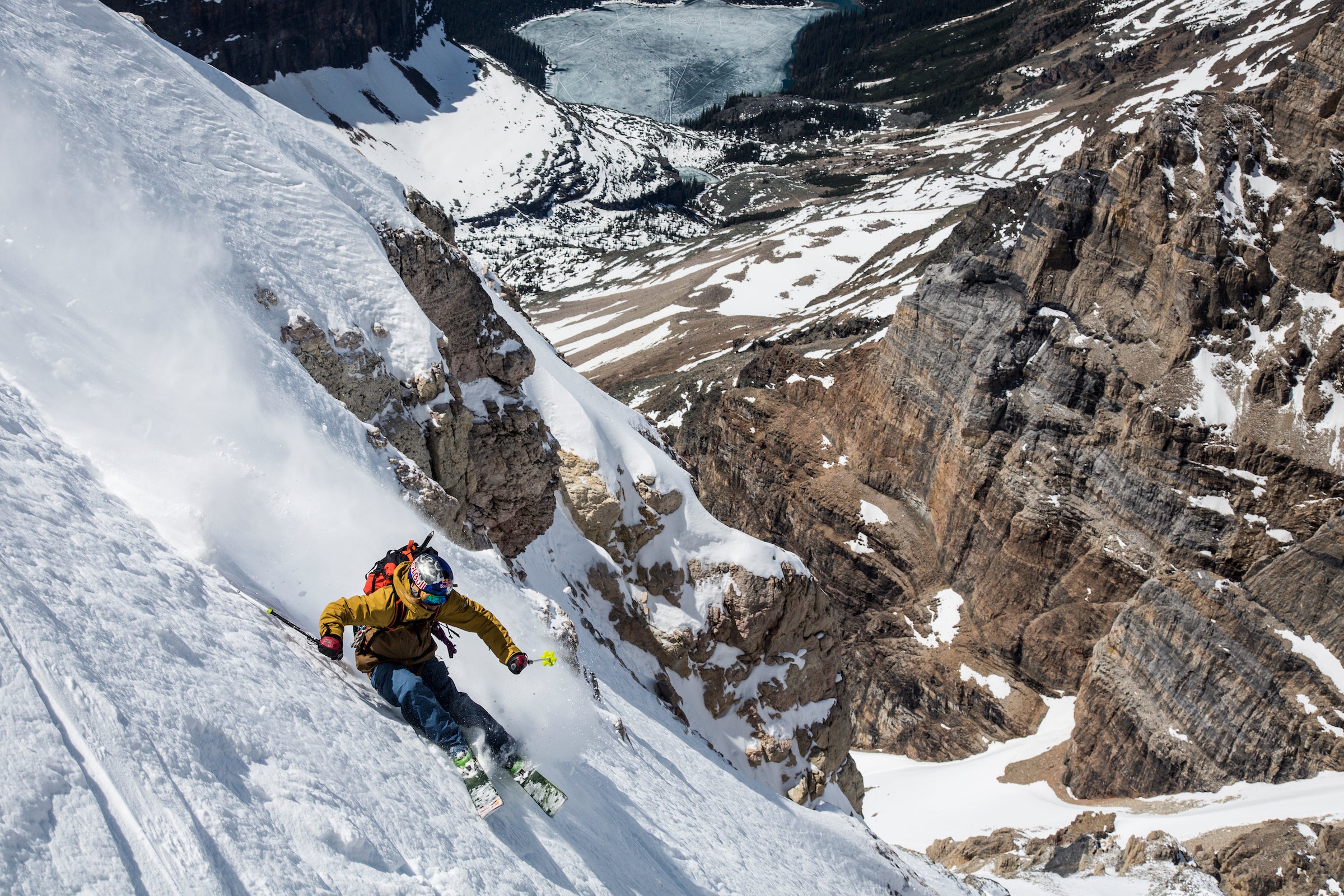This Pro Skier Blew His ACLs And Used the Downtime to Get Ripped

John Collinson skiing on Mount Lefroy during a ski mountaineering trip at Banff National Park in Alberta, Canada. (Photo: Christian Pondella/Red Bull Content Pool )
Professional big mountain skier Johnny Collinson has always been strong. Just watch him ski 3,000-foot lines in Alaska and huck his meat off cliffs in TGR films, and you’ll get the picture.
But even strong skiers aren’t immune to injuries, and in 2018, Collinson blew his ACL while skiing. A year later, he tore that very same (reconstructed) ACL while filming with TGR in Canada. As a result of the injuries and then the pandemic, which shuttered last ski season ahead of schedule, Collinson was forced to spend a year-and-a-half off skis.
So what did he do to keep busy and sane during that time? He got ripped. Like, really ripped. He shares how he did it.
I’ve been into fitness and training for sport for a long time, but have really delved deep into it over the last three years. I had a couple of knee injuries in 2018 and 2019 that were big turning points in focusing all my energy I had put into skiing and playing outside into spending more time learning about proper rehab and training to get back to sport.
I put in a lot of focused effort through the first rehab, felt really strong, and tried to follow all the protocols. I treated the whole thing as positively as possible because I felt it was better to be positive and learn as much as I could.
When I blew the ACL again, the first week was a bit rough. I questioned what I had done and nitpicked everything. But once I moved through that process of being bummed and being like, ‘Yeah, it sucks,’ the best thing is to try to learn from the whole thing. I tried to improve upon the process the second time around, which took a bit more time to not only focus on physical rehab and learning, but to step up my mental growth as well.
The biggest thing for me was to accept what happened, take the time needed to be bummed (but not too long), and then move forward with a positive outlook and appreciate every single small step forward as a big win. It starts really small—like small increases in range of motion, getting a full pedal stroke on a bike—but you have to take those as big wins. I always tried to look at what I could do, not what I couldn’t.
I think our bodies are so cool, how they can adapt and heal. It’s become important to me to learn as much as I can about taking care of my body so that I can feel my best and extend that as long as possible. I’ve learned that staying happy and healthy is in my own hands. I think that’s why I love fitness so much—it’s something within my control that has a direct impact on my mental and physical wellbeing. And I really like working with brands like Stitch Fix to help promote an active lifestyle by sharing videos of creative ways to mix up the daily workout routine.
I definitely feel stronger after my knee injuries, but less in a sense that I doubled my squat or something, and more in a comprehensive sense that I understand how muscle chains work together a lot better. I’ve learned how important it is to take care of all the little pieces that often get overlooked. And I had such a great team of trainers and physical therapists over at Red Bull to work with that I felt really fortunate to have access to all that information and learning.
My weekly routine really depends on the time of year and what goals I have. Right now in mid-winter, my main goal is to feel strong on skis. This means most of my time is spent skiing—either at the resort or ski touring. Any extra workouts are kept at low intensity so most of my energy can go to time on snow. I still try to sneak in three days of core work a week that encompasses core/back/glutes/hips—and, of course, active recovery and stretching every day I can after skiing.
In the pre/off-season I will train five to six days a week, with the weeks varying in intensity—some with more bike work or cardio, and others with more intensive strength workouts to build strength and explosive power leading up to ski season.
All you really need in terms of fitness gear is shoes, clothes, a little space, and motivation (as cheesy as that sounds). Having some extra equipment always helps me with motivation though, so at this point, I pretty much have a full gym buildout at home, which is amazing. A few key pieces for me that I find versatile are kettlebells, bands, parallettes, and a pull-up bar.
My biggest takeaway from training is to always include some creativity. There is always a place for the classic exercises, but sometimes it is nice to mix workouts up to keep it fun and engaging. Staying consistent with exercise is an important factor in reaching goals and staying healthy.
Read More to Get Ripped for Skiing
Plyometric Training for Skiers
Protect Your ACL With These Essential Butt and Hamstring Exercises
A Procrastinator’s Guide to Ski Fitness